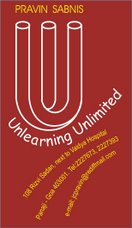A dog-meal company was holding its annual convention. The Advertising
Director spoke of an interesting new retail scheme that would ‘revolutionize
the industry’. The Marketing Director extolled the company’s decision to
introduce the latest state-of-the-art refresher-training program for ‘the best
damned sales force in the business.’
Finally, the CEO rose to make his remarks, ‘we heard from all our
Departmental Heads about their wonderful plans. I have only one question. If we
have the best advertising, the best marketing and the best damn sales force in
the business, how the hell do we sell less dog food than everyone else?’
The silence in the Convention Hall was broken by a small voice from the
back of the room: ‘Because the dogs hate it!’
While packaging, promotion, positioning and projection are crucial to
ensure value to the product, the eminence of the produce cannot be ignored. But
so often we forget the main thing and focus on the marketing only. It is
important to ensure the surface wrapper does not hold within a hollow or lesser
core.
The core is the foundational part which is primary over the secondary
enveloping parts. For an individual, core character is more important than
clothing and other drapes. For a team, core synergy remains higher than
aesthetics and apparel. For a community project, core purpose is greater than
public relations or publicity.
Of course, the envelope can empower the core. But it is pertinent to
note that the surface packaging cannot override the core. Otherwise, we will
focus only on the surface and ignore the fundamental forte. Hence, we should
focus on values, vision and purpose so that we, and the casing, remain
centrally aligned to a strong core.
Focus on the core first and then the casing…
Sans strong roots, shoots struggle in rising!
~ Pravin Sabnis



